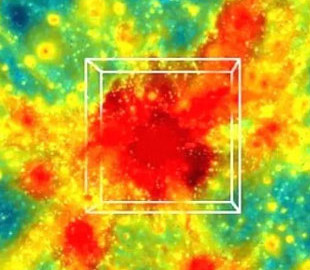
The Frontier supercomputer at Oak Ridge National Laboratory (USA) has conducted the largest astrophysical simulation of the Universe, modeling a volume of more than 31 billion cubic megaparsecs to study the evolution of cosmic structures and dark matter.
The project, known as ExaSky, aims to investigate the complex physical processes and structures of the Universe, including the nature of dark matter, which makes up most of its mass. Dark matter is a mysterious substance that interacts only through gravity, while ordinary atomic matter forms visible galaxies, stars, and planets. Through simulations, scientists study the interaction of these components in the context of gravitational and thermodynamic processes.
To create the model, the researchers used 9,000 Frontier computing nodes, which provided extremely high computing power. They used hydrodynamic cosmological simulations, which simulate the physics of gas distribution, star formation, black holes, and galaxies in the Universe. An important role in the implementation of these tasks was played by a special code Hybrid Accelerated Cosmology (HACC), developed to optimize calculations on a supercomputer.
One of the key visualizations of the simulation spanned a volume of space measuring 64?64?76 megaparsecs (311,296 cubic megaparsecs), showing the structures of galaxies and the cosmic web. This area is only 0.001% of the total volume of the simulation, which emphasizes the scale of the calculations. Thanks to the modernization of Frontier, which is recognized as the fastest supercomputer in the world, scientists were able to achieve unprecedented accuracy in reproducing physical processes.
The uniqueness of the project also lies in the addition of baryonic physics – the physics of ordinary matter, which includes gas and stars – which allowed to significantly improve the realism of the model. “Combining such complex processes with the enormous volume of the simulated universe is a major advance in astrophysics,” said Bronson Messer, an astrophysicist at Oak Ridge National Laboratory.
Although the results of the study have not yet been published, the ExaSky simulation is expected to make important contributions to our understanding of the formation of cosmic structures, especially the influence of dark matter on the evolution of the universe. It also provides a means to compare the simulated data with observations from modern telescopes, such as the Rubin Observatory in Chile, which will help improve the accuracy of astrophysical models.
The ExaSky simulation demonstrates how next-generation supercomputers, such as Frontier, are revolutionizing space exploration. They allow modeling of processes that were previously inaccessible due to limitations in computing power, opening up new perspectives for the science of the universe.

